
show/hide words to know
Axon: a long thick projection in nerve cells that sends electrical signals out away from the cell body......more
Cell: a tiny building block that contains all the information necessary for the survival of any plant or animal. It is also the smallest unit of life... more
Central nervous system (CNS): a part of the nervous system which includes the brain and spinal cord.
Dendrites: long thin projections in nerve cells which receive electrical signals... more
Neuron: a special cell which is part of the nervous system. Neurons work together with other cells to pass chemical and electrical signals throughout the body... more
Nutrient: a vitamin, mineral, or chemical in food that the body uses to grow, repair, or do work... more
Peripheral nervous system (PNS): a part of the nervous system which includes all the nerves outside of the brain and spinal cord.
Flashcard facts and information about the nervous system
Biology Bits stories are a great way for you to learn about biology a little bit at a time. We’ve broken down information into pieces that are very tiny—bite-sized biology cards. Cutting out the cards will let you organize them however you want, or use them as flashcards while you read.
This set of bits will teach you about the system that senses the world around you and controls your body: your nervous system. To learn more about the science behind your nerves, visit A Nervous Journey.
Play the slide show from the beginning or pick a slide to begin with by clicking on a slide below.
View Citation
Bibliographic details:
- Article: Nervous Bits
- Author(s): Patrick McGurrin
- Publisher: Arizona State University School of Life Sciences Ask A Biologist
- Site name: ASU - Ask A Biologist
- Date published: September 11, 2014
- Date accessed: January 10, 2025
- Link: https://askabiologist.asu.edu/biology-bits/nervous-bits
APA Style
Patrick McGurrin. (2014, September 11). Nervous Bits. ASU - Ask A Biologist. Retrieved January 10, 2025 from https://askabiologist.asu.edu/biology-bits/nervous-bits
Chicago Manual of Style
Patrick McGurrin. "Nervous Bits". ASU - Ask A Biologist. 11 September, 2014. https://askabiologist.asu.edu/biology-bits/nervous-bits
Patrick McGurrin. "Nervous Bits". ASU - Ask A Biologist. 11 Sep 2014. ASU - Ask A Biologist, Web. 10 Jan 2025. https://askabiologist.asu.edu/biology-bits/nervous-bits
MLA 2017 Style
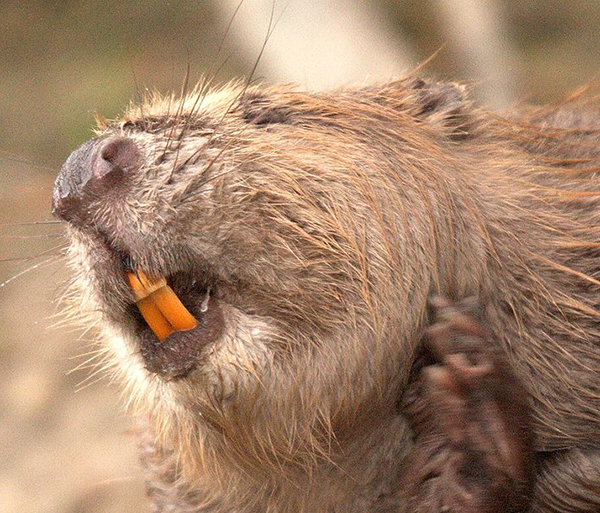
Here are some pieces of biology that you can sink your teeth into. One bit at a time.
Be Part of
Ask A Biologist
By volunteering, or simply sending us feedback on the site. Scientists, teachers, writers, illustrators, and translators are all important to the program. If you are interested in helping with the website we have a Volunteers page to get the process started.







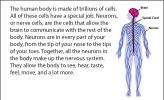
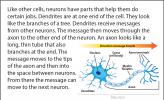
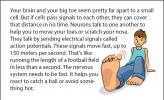

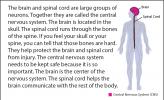
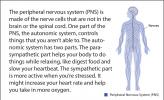
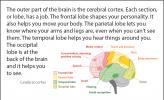
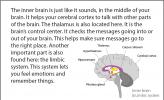
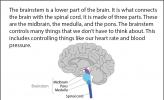
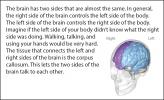
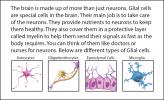
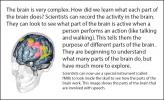
![Hypothalamus – [high-puh-thal-uh-muhs]; Corpus callosum – [core puhs] [kuh-loh-suhm]; Cerebral cortex – [suh-ree-bruh-l] [core-tex]; Pituitary gland – [pi-too-i-ter-ee] [gland]; Hippocampus – [hip-a-kam-pus]; Thalamus – [thal-uh-muhs]; Astrocyte – [as-tro-sight]; Oligodendrocyte – [oli-go-den-dro-cyte]; Ependymal cell – [uh-pen-duh-mul] [cell]; Microglia – [mi-crog-lee-uh]; Dendrite – [den-dright] Illustration of a talking human head](https://legacy.askabiologist.asu.edu/sites/default/files/styles/biology_bit_thumbnail_120x74/public/biology-bits-nervous-system-slide-13.jpg?itok=Uq-lLoYx)


 For Teachers
For Teachers